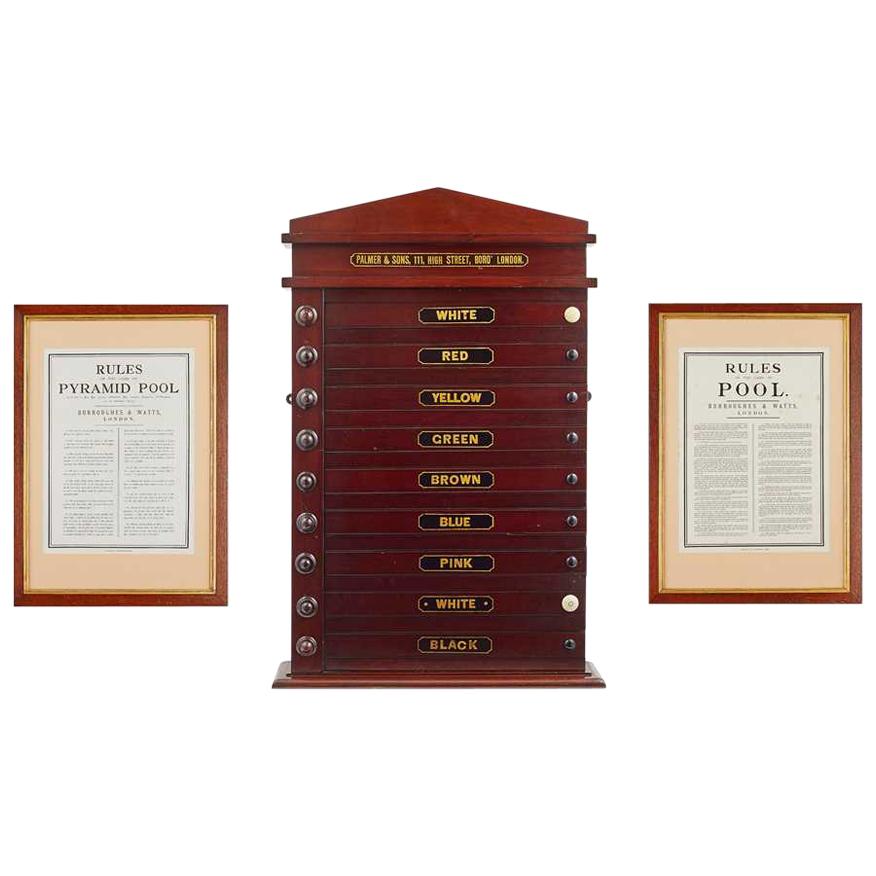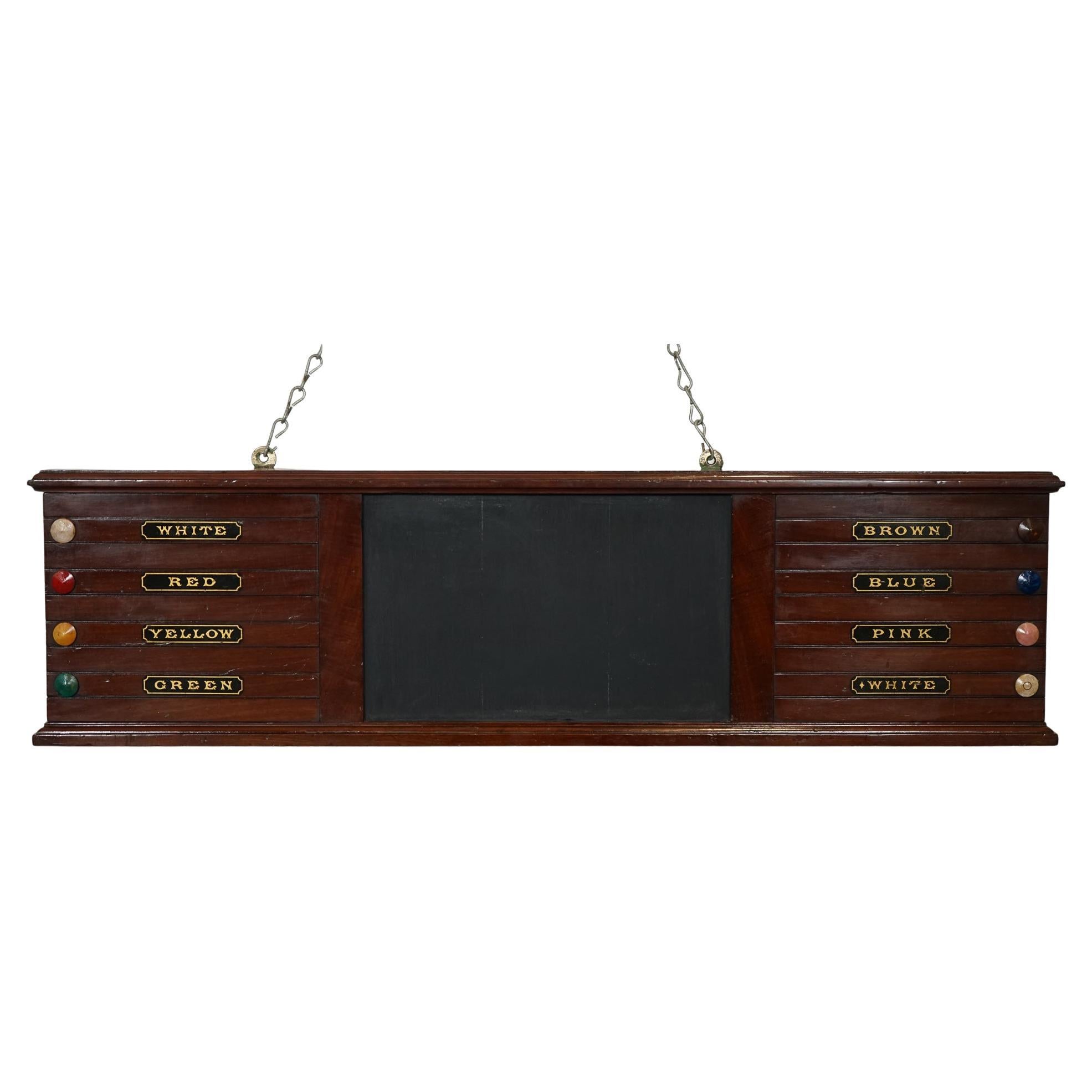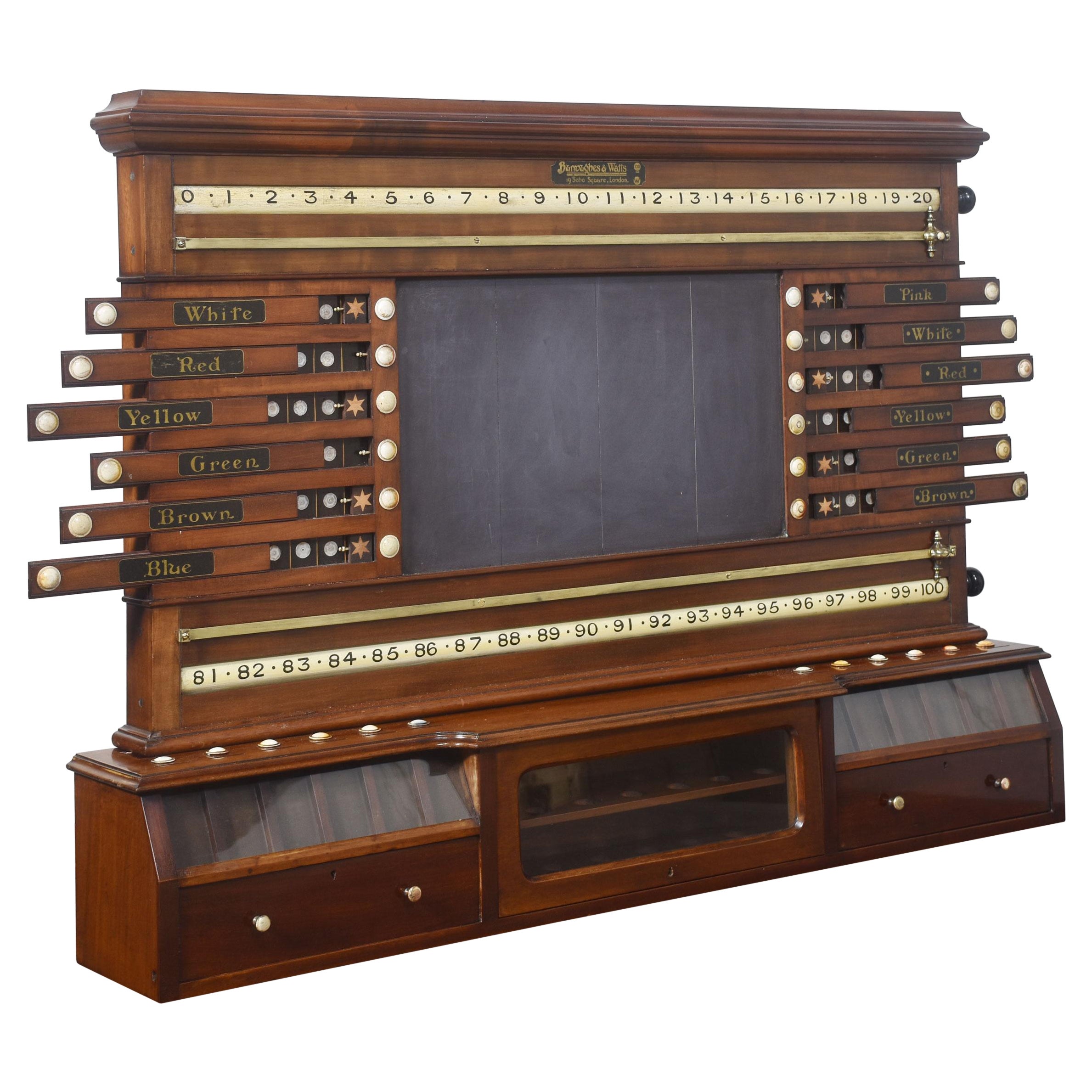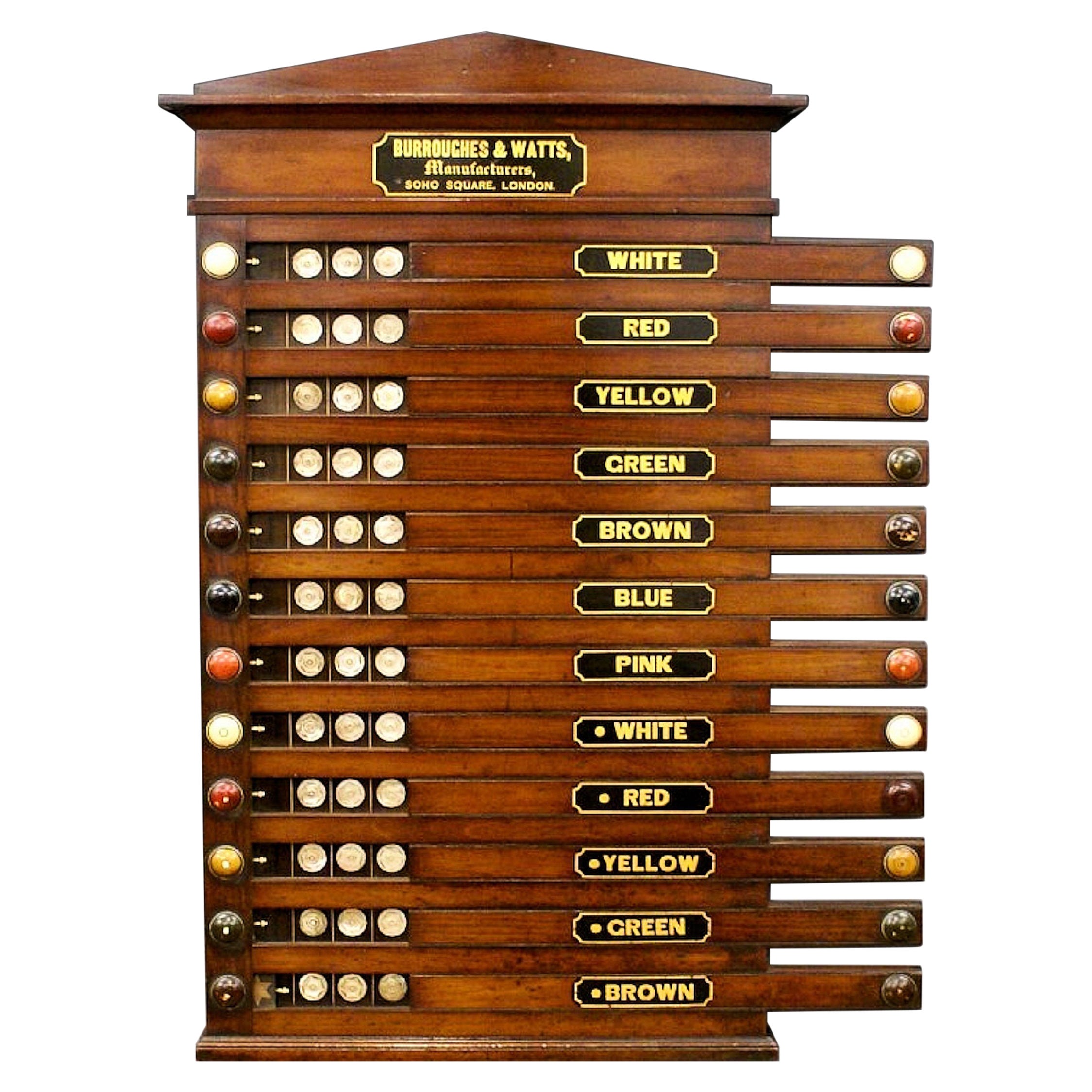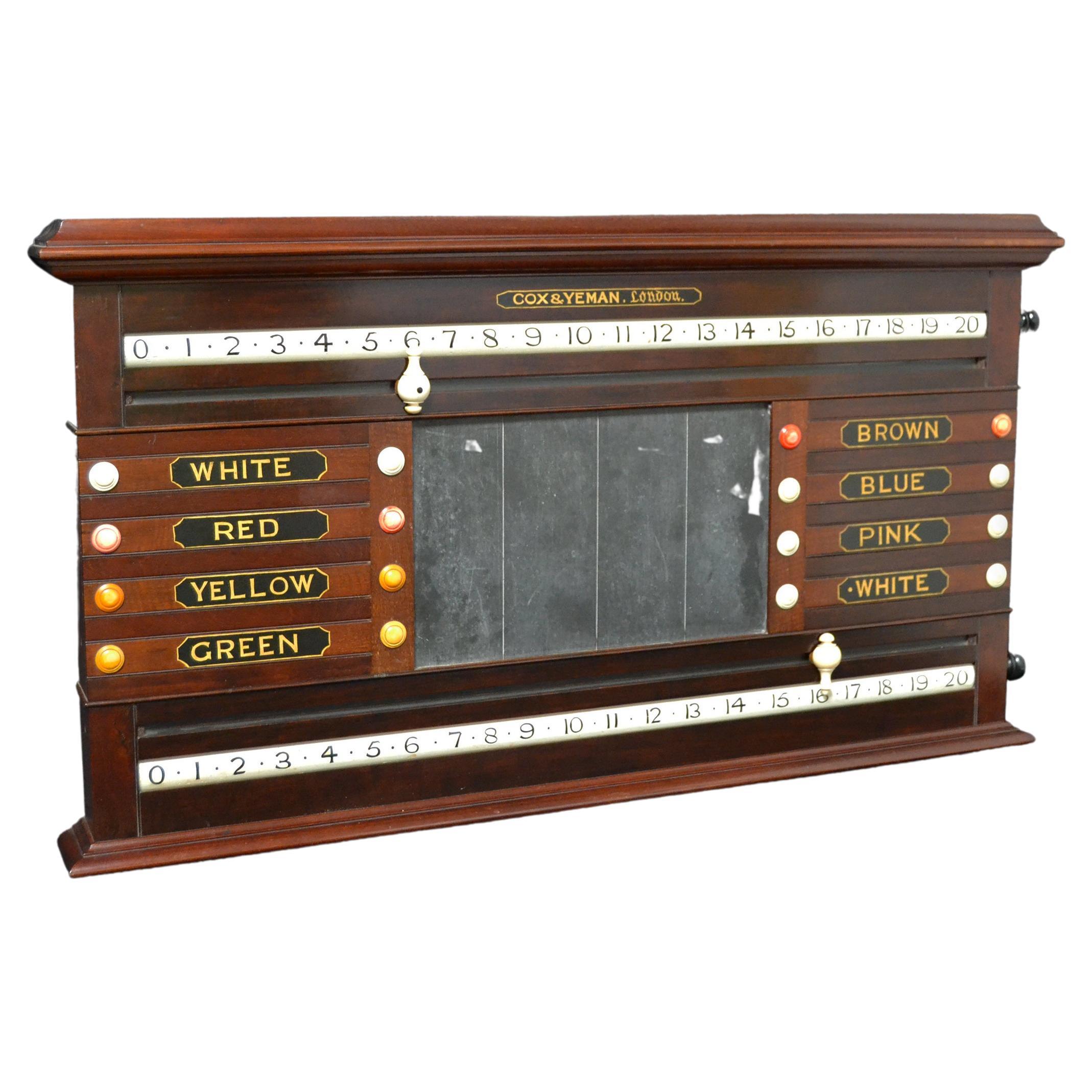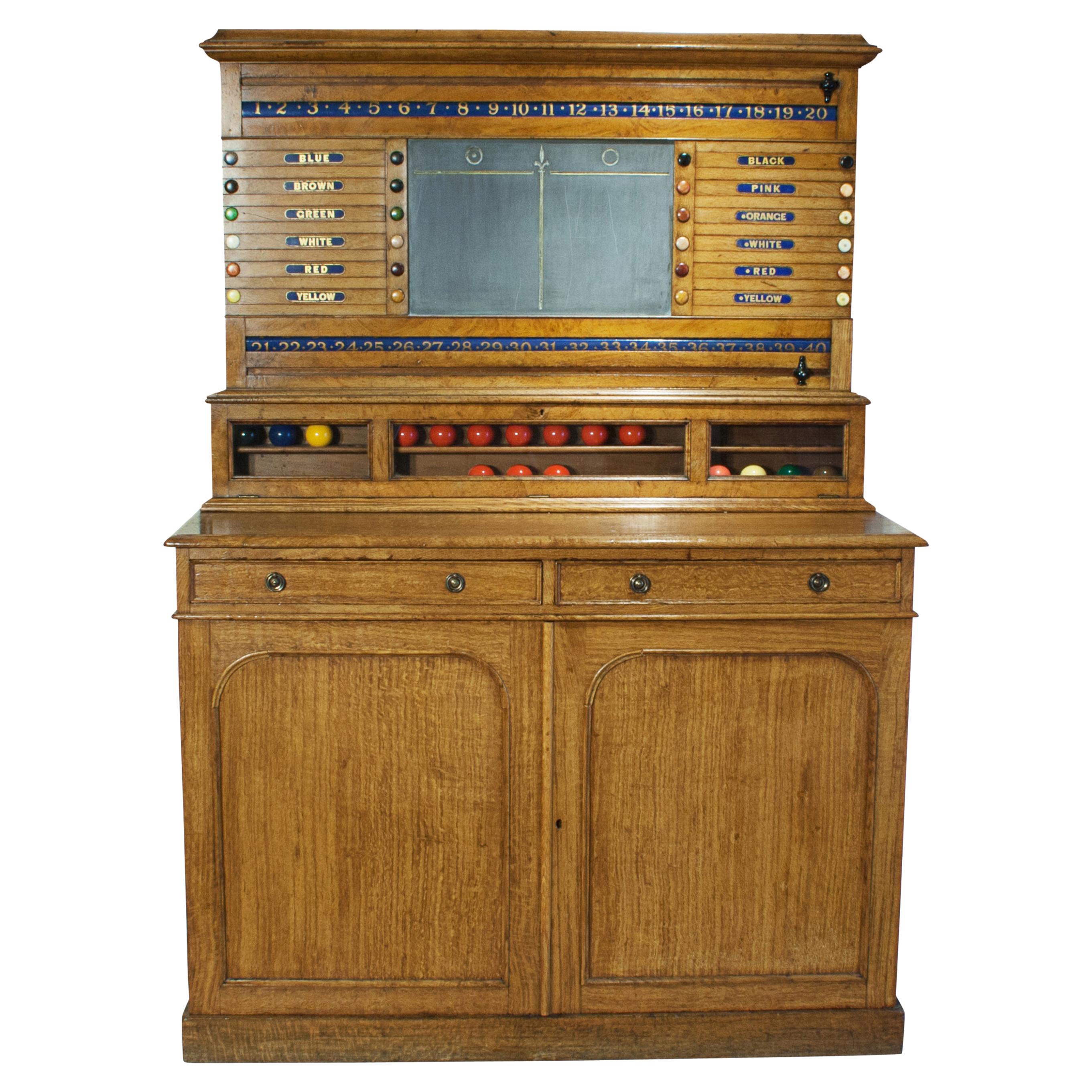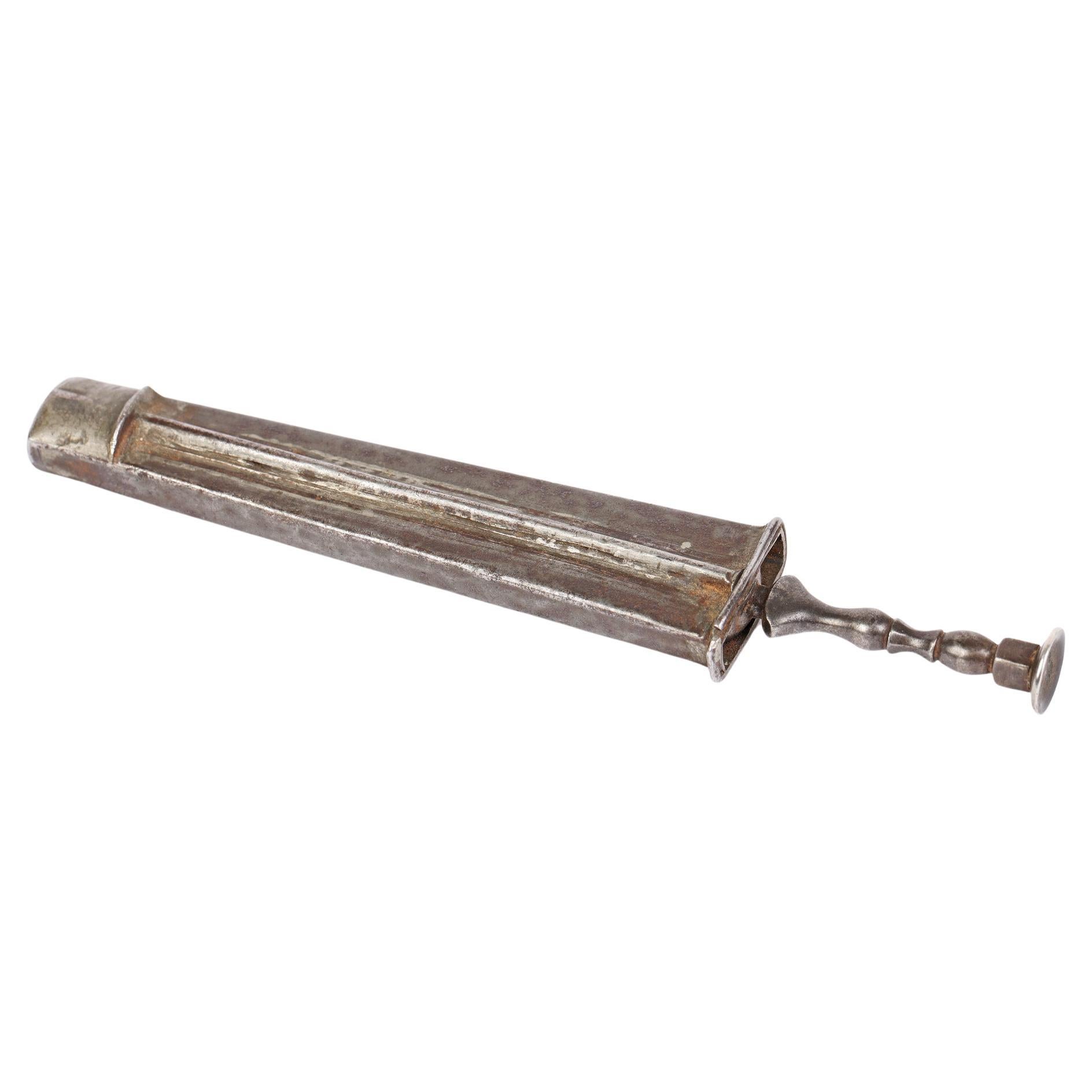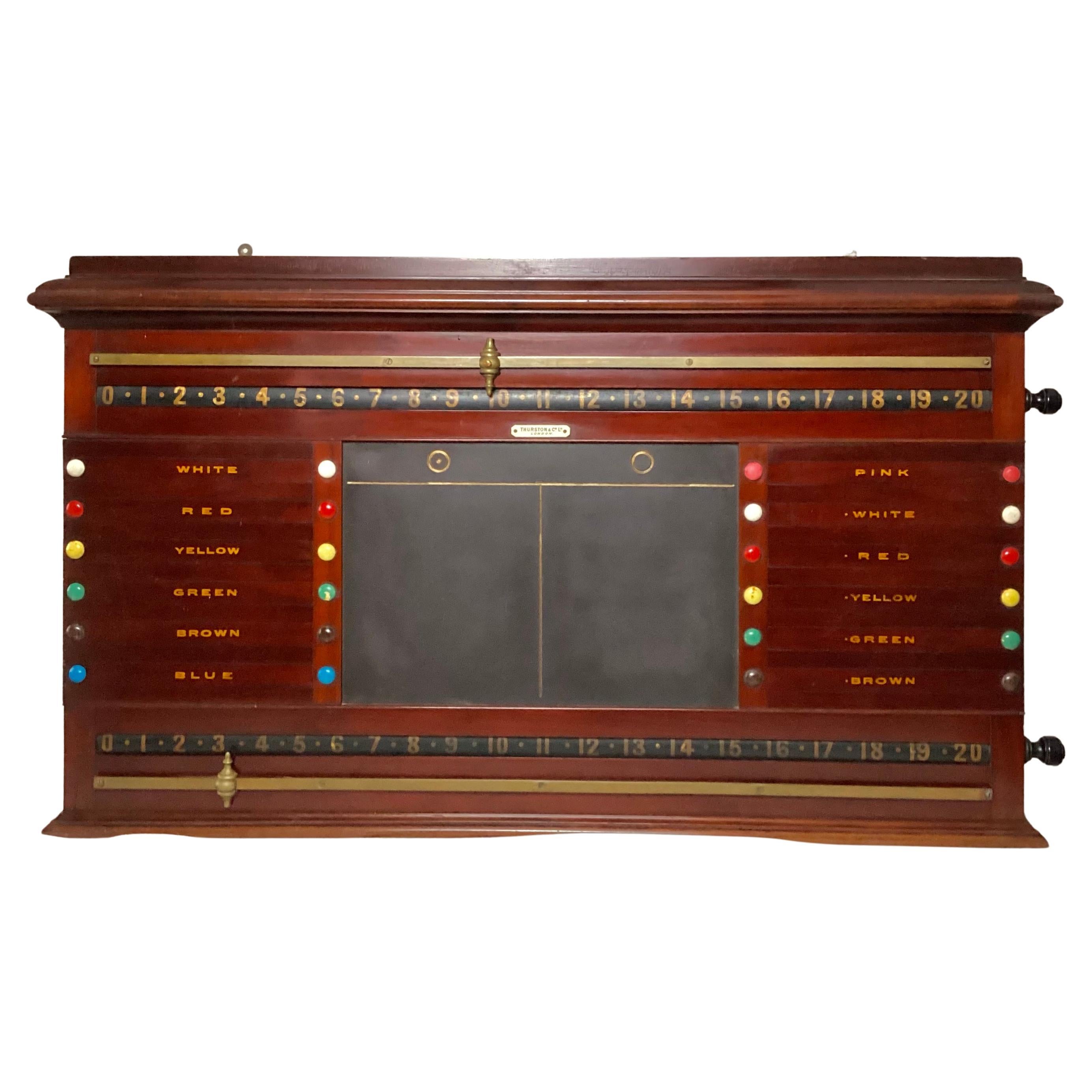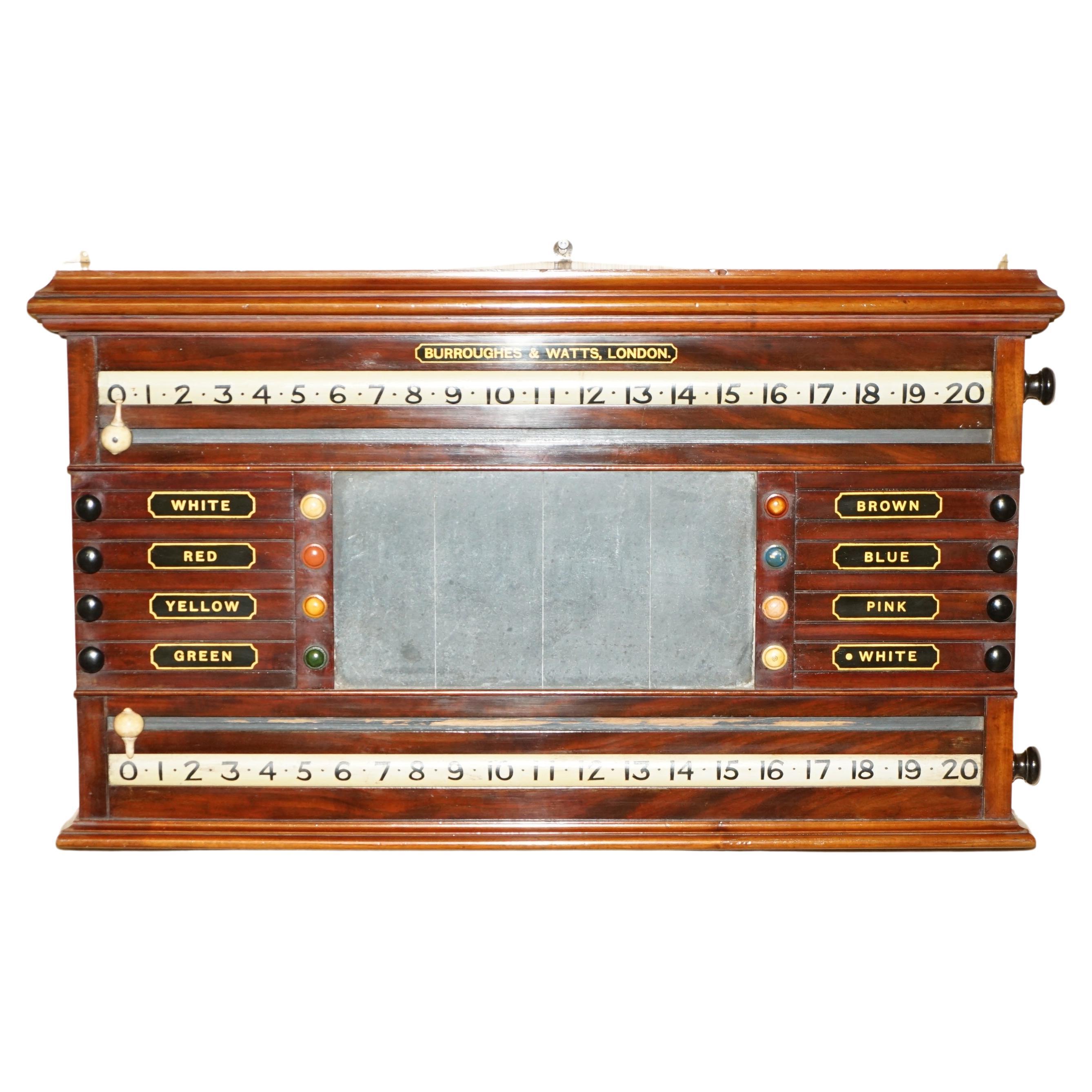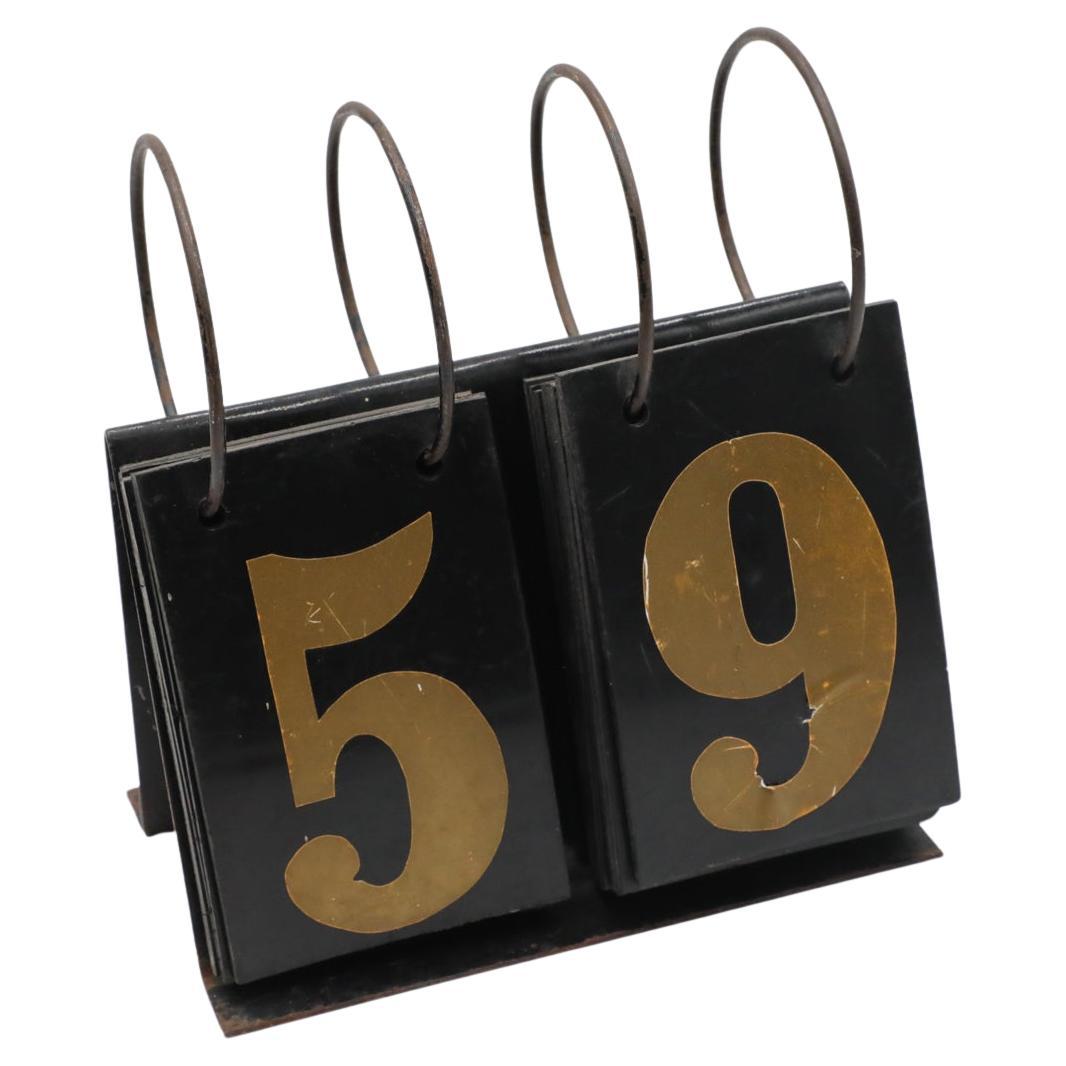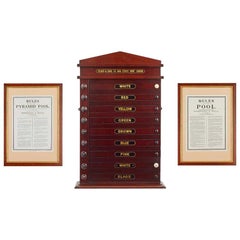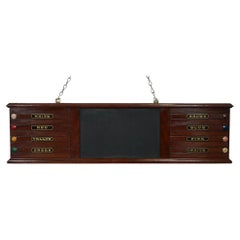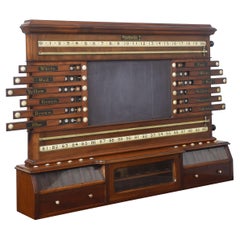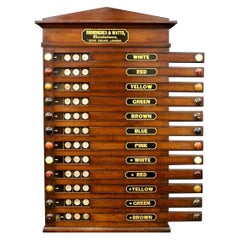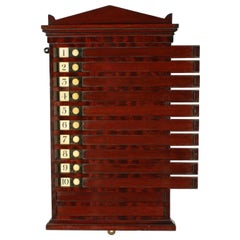
Rare Georgian 'Life Pool' Scoreboard
View Similar Items
1 of 8
Rare Georgian 'Life Pool' Scoreboard
About the Item
- Dimensions:Height: 18.9 in (48.01 cm)Width: 11.4 in (28.96 cm)Depth: 1.8 in (4.58 cm)
- Materials and Techniques:
- Place of Origin:
- Period:
- Date of Manufacture:circa 1835
- Condition:Wear consistent with age and use.
- Seller Location:Newcastle Upon Tyne, GB
- Reference Number:Seller: 66101stDibs: LU3921314688932
Authenticity Guarantee
In the unlikely event there’s an issue with an item’s authenticity, contact us within 1 year for a full refund. DetailsMoney-Back Guarantee
If your item is not as described, is damaged in transit, or does not arrive, contact us within 7 days for a full refund. Details24-Hour Cancellation
You have a 24-hour grace period in which to reconsider your purchase, with no questions asked.Vetted Professional Sellers
Our world-class sellers must adhere to strict standards for service and quality, maintaining the integrity of our listings.Price-Match Guarantee
If you find that a seller listed the same item for a lower price elsewhere, we’ll match it.Trusted Global Delivery
Our best-in-class carrier network provides specialized shipping options worldwide, including custom delivery.You May Also Like
Antique Victorian Pool Scoreboard and 2 Prints Palmer & Sons-Joe Davis
Located in London, GB
This is an excellent antique mahogany pool scoreboard by Palmer & Sons, London late 19th century in date.
This is one of the best examples of a pool scoreboard, with nine slides and a moulded pediment above the maker's label:
PALMER & SONS, 111, HIGH STREET, BORO', LONDON
Together with two prints in oak frames,
THE RULES OF POOL
&
THE RULES OF PYRAMID POOL,
Burroughes & Watts, London.
Provenance:
Sotheby's Belgravia sale on 6th December 1979 of
World Champion Billiards/Snooker player 'Joe Davis'
This is a fun piece which is sure to attract a lot of attention from your guests and be a welcome addition to any games room..
THE BOTANICAL NAME FOR THE MAHOGANY THIS ITEM IS MADE OF IS SWIETENIA MACROPHYLLA AND THIS TYPE OF MAHOGANY IS NOT SUBJECT TO CITES REGULATION.
Condition:
In excellent condition, please see photos for confirmation.
Dimensions in cm:
Height 65 x width 44 x depth 9 - scoreboard
Height 58 x width 41 x depth 2.5 - print with frame
Dimensions in inches:
Height 25.6 x width 17.3 x depth 3.5 - scoreboard
Height 22.8 x width 16.1 x depth 1.0 - print with frame
Burroughes & Watts, London -
firm, which would become one of the most famous of the English billiard table manufacturers, was founded in 1836 by William Burroughes in partnership with F. Watts. William had learnt his trade with Thurston's, and set up his new business at 19 Soho Square, London. He brought with him from Thurston's all the latest innovations for billiard tables, immediately starting to produce models with rubber cushions and slate beds. Even though the natural rubber cushions would give extremes of elasticity according to temperature, and the slates where only an inch thick, this was to be the future of billiard tables, and Burroughes and Watts were at the forefront from the very beginning.
They were quickly recognised as a world-class manufacturer and received a prize medal for a table entered for the Great Exhibition of 1851, with a similar award being received at the subsequent London Exhibition of 1862.
In 1860 they were making a modest 150 full-sized tables a year, but by the end of this decade production had doubled. In 1869 they followed the lead of Thurston's and improved their cushions with "vulcanised" rubber, which were designed to minimise the effect of temperature variations.
The business now looked for expansion away from London, and in the early 1870's they opened up branches in Dublin and Belfast. At this time most tables in Ireland were made with cast iron frames, and the wooden framed Burroughes & Watts tables proved popular with the locals.
In 1873 the company secured a major contract for billiard tables to "Her Majesty's War Department and Admiralty" and around the same time received the warrant of Queen Victorian and Edward, Prince of Wales.
The following year, the champion, William Cook...
Category
Antique 1890s English Victorian Games
Materials
Mahogany, Oak
SUBLIME EST 1873 BiLLBOARD SNOOKER POOL SCOREBOARD BY ORME & SONS MANCHESTER
By Orme & Sons 1
Located in Pulborough, GB
We are delighted to offer for sale this Sublime Est 1873 Billboard Snooker Pool Scoreboard by Orme & Sons Manchester is not just a remarkable piece of craftsmanship; it is also a s...
Category
20th Century British Games
Materials
Hardwood
Mahogany Billiard scoreboard
Located in Cheshire, GB
Wall-mounted billiard snooker scoring cabinet featuring a central panel flanked by sliders and revolving number bars All mounted on a ball storage box with glazed drawers for stake r...
Category
Antique Late 19th Century British Sports Equipment and Memorabilia
Materials
Wood
Late 19th C. Life Pool Score Board
Located in London, GB
This rare Victorian mahogany 12 player life pool scoreboard features sliders that open to reveal counters and stars. The makers, Burroughes & Watts, are a we...
Category
Antique Late 19th Century British Games
Materials
Mahogany
Billiard Snooker or Life Pool Scoring Board London
By Cox & Yeman
Located in Radstock, GB
A beautiful mahogany framed scoring cabinet by Cox & Yeman circa 1890, featuring hand painted sliding panels ,revolving numbers and a central slate panel....
Category
Antique 1890s English Late Victorian Sports Equipment and Memorabilia
Materials
Mahogany
Victorian Oak Billiard, Lifepool Scoreboard with Cabinet
Located in Oxfordshire, GB
Snooker, Billiards & Life pool scoreboard attributed to Thurston & Co.
A nice combined Victorian billiards and life pool scoreboard made of light oak. The billiard scorer sits upon a lockable ball cabinet that can house 32 balls, which then sits upon a cupboard. The cupboard comprises of two drawers, a pair of panelled doors enclosing a shelf, the cupboard raised on a plinth base. The scorer comprises of two blue rollers with gilt painted numbers, 0 to 20 / 20 to 40 / 40 to 60 / 60 to 80 / 80 to 100, with two ebony slides to mark your score, one spot and one plain. The Life Pool board consists of 12 slides with coloured discs, each colour representing the player's cue ball and the order of play. The colours of the discs being blue, brown, green, white, red, yellow, black, pink, spot orange, spot white, spot red and spot yellow. When each slide is pulled back 3 boxwood discs are revealed, one for each life of the player. There are also "stars" hiding, and these are used as extra lives. In the middle of the scoreboard there is a slate board for keeping scores etc.
The game of Life Pool can be played by a number of players, a maximum of 12 players with this scoreboard, who form the pool. Each player has their own coloured ball and loses a life each time the ball is potted by an opponent. When three lives...
Category
Antique 1880s British Sports Equipment and Memorabilia
Materials
Oak
